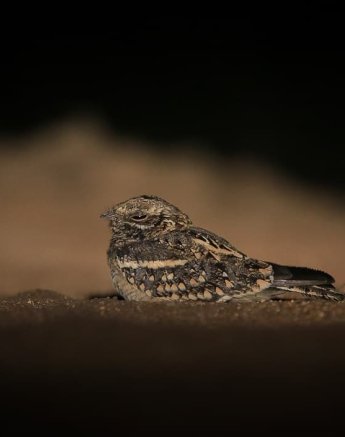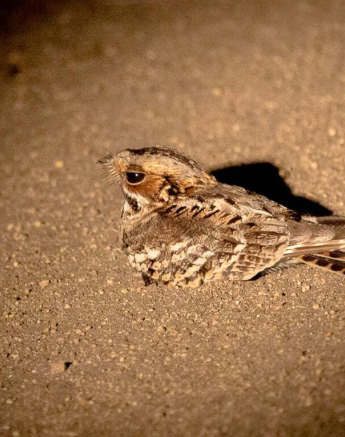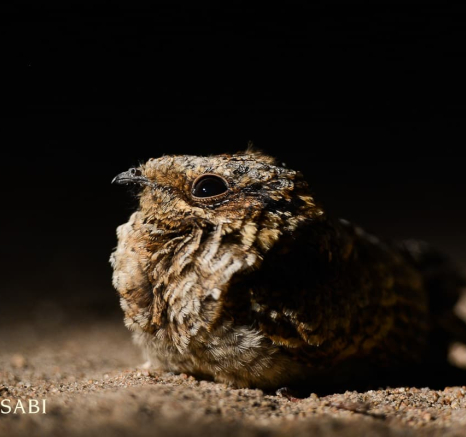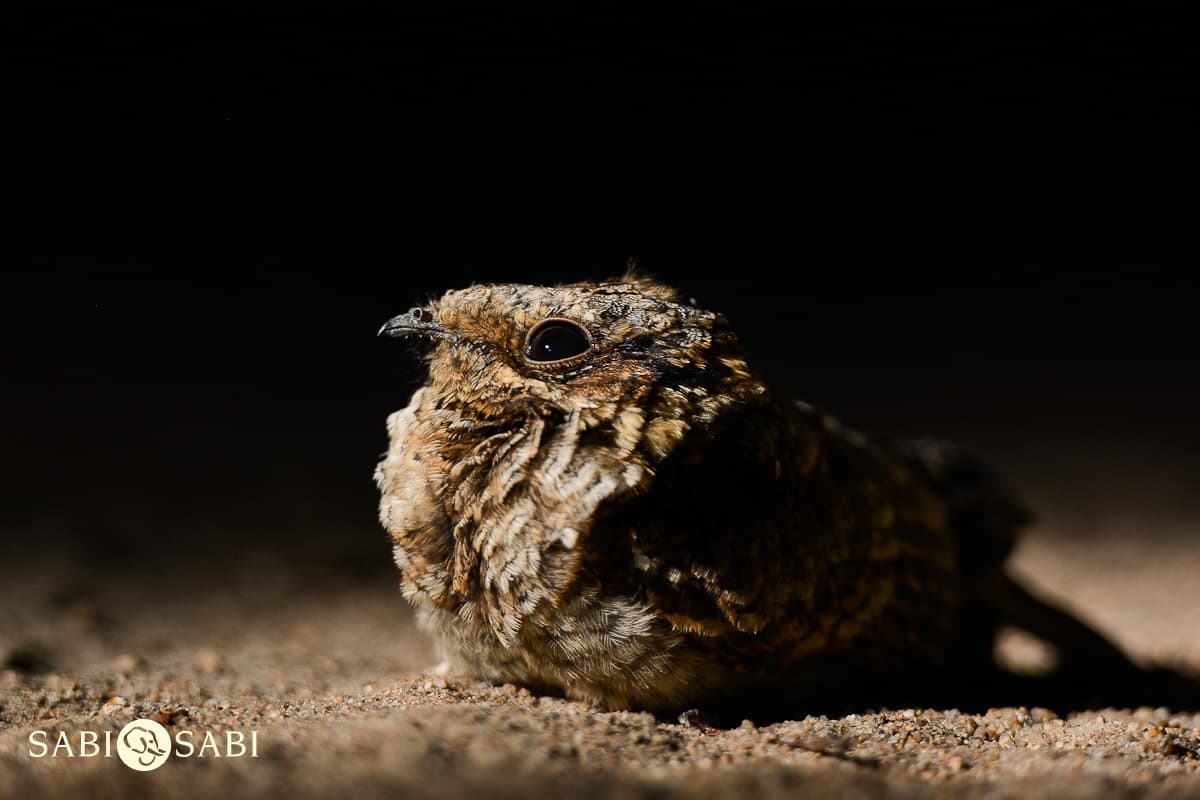Nightjar
on Jun 14, 2019Kingdom: Animalia
Phylum: Chordata
Class: Aves
Order: Caprimulgiformes
Family: Caprimulgidae
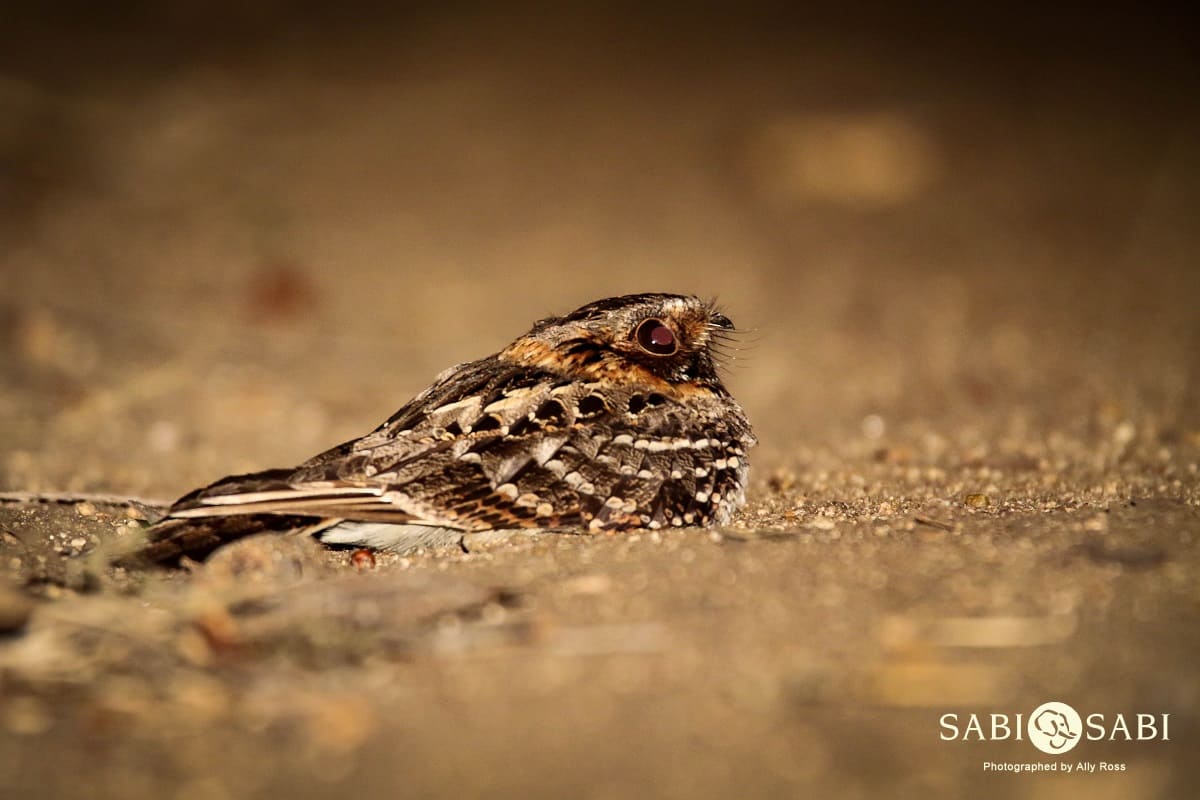
Nightjars have a global distribution and are found all around the world except in New Zealand and some islands of Oceania.
Here in South Africa and more specifically Sabi Sabi we find six out of the seven species. Most common species found here is the Fiery Necked Nightjar. A number of other species occur here too:
- European Nightjar
- Square-tailed Nightjar
- Rufous-cheeked Nightjar
- Pennet-winged Nightjar
- Freckled Nightjar
However, they are not like most of the other birds that you will see during the day on safari... They are a crepuscular bird species mostly active in the late evening, early mornings or at night feeding predominantly on moths and large flying insects.
This means that you will be seeing them during your evening drives. During evening safaris, you will quite often hear the very distinct call of the Fiery-necked Nightjar; “Good Lord deliver us” churring into the early hours of the morning.
If they are not on the warm dirt road of the paths you may take, they can be incredibly difficult to spot. Nightjars have a very unique colouration, aptly named, ‘Cryptic Colouration’ which helps them blend into to their surrounds and conceal themselves incredibly well.
This cryptic colour and pattern makes them look very similar to that of bark and leaves.
Status
Unfortunately, their status is dwindling, and this is due to their roosting and feeding habits which take place on the ground. Nightjars will lay their eggs on the ground; this means that these eggs are in harm’s way when vehicles are in the area. Their feeding habits also see them spend a fair amount of time waiting in the warm sand for insects to fly by.
What big eyes you have
On closer inspection of the Nightjar, you will notice that they have incredibly large eyes. Their ability to see at night is due to a high concentration of light sensitive rods that enable them to see really well in low light conditions.
Diet
Nightjars can consume anything from spiders, moths, beetles and various other large flying insects. They may have very small beaks, but they have incredibly large gape and sensitive bristles that help accurately locate the prey item, guiding it into the mouth.
Most memorable sighting
Something I have really enjoyed doing with my guests is belly crawling to do some nighttime Nightjar photography. Whilst driving one evening with a keen wildlife photographer, I asked him if he had ever photographed a Nightjar before... to which his reply was “No”. So, I flew out the vehicle saying this is our opportunity! We got down onto our knees and slowly lowered ourselves onto our bellies. Then just like two-inch worms, we slowly moved closer toward the Nightjar sitting in the middle of the road. With Doc, my tracker holding the flashlight steady, we were able to get quite close, resting our cameras on big piles of elephant dung for stability. We walked away with some cracker shots and a very pleased photographer.
Photo content
